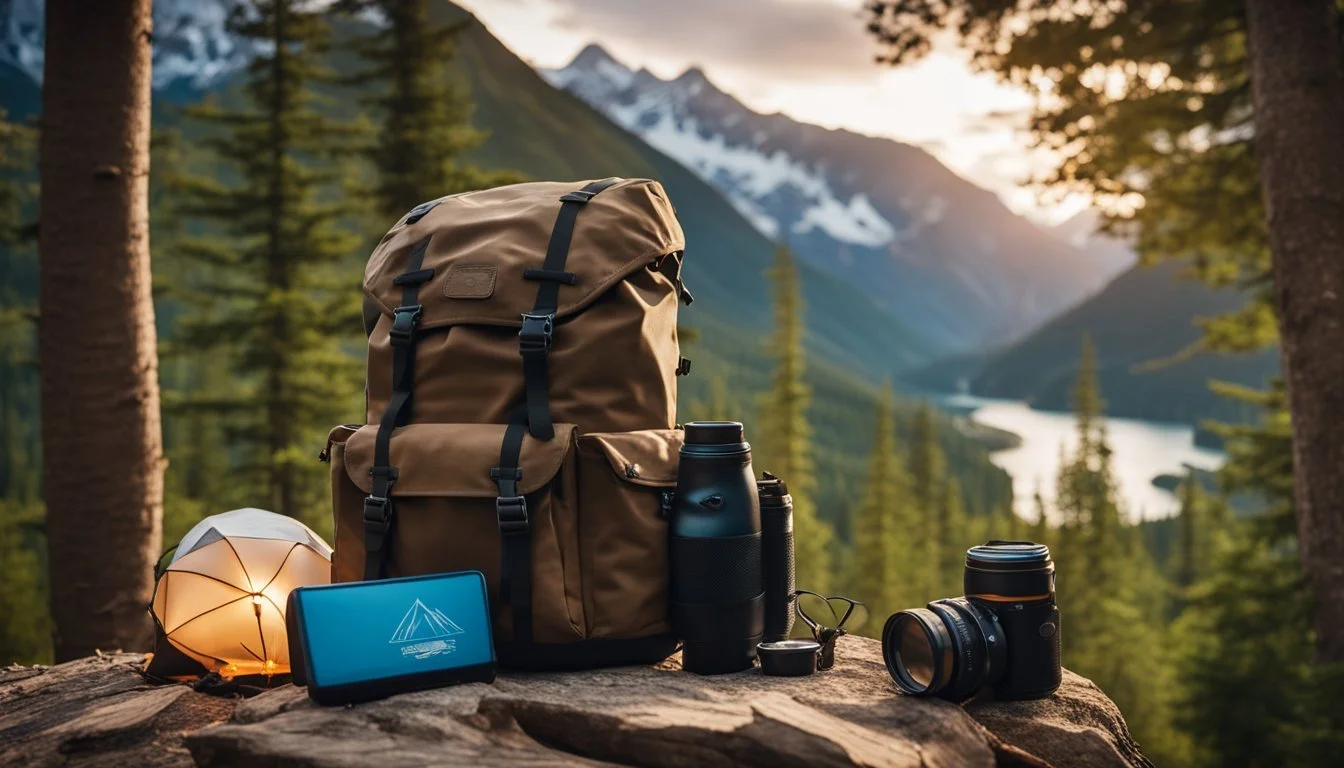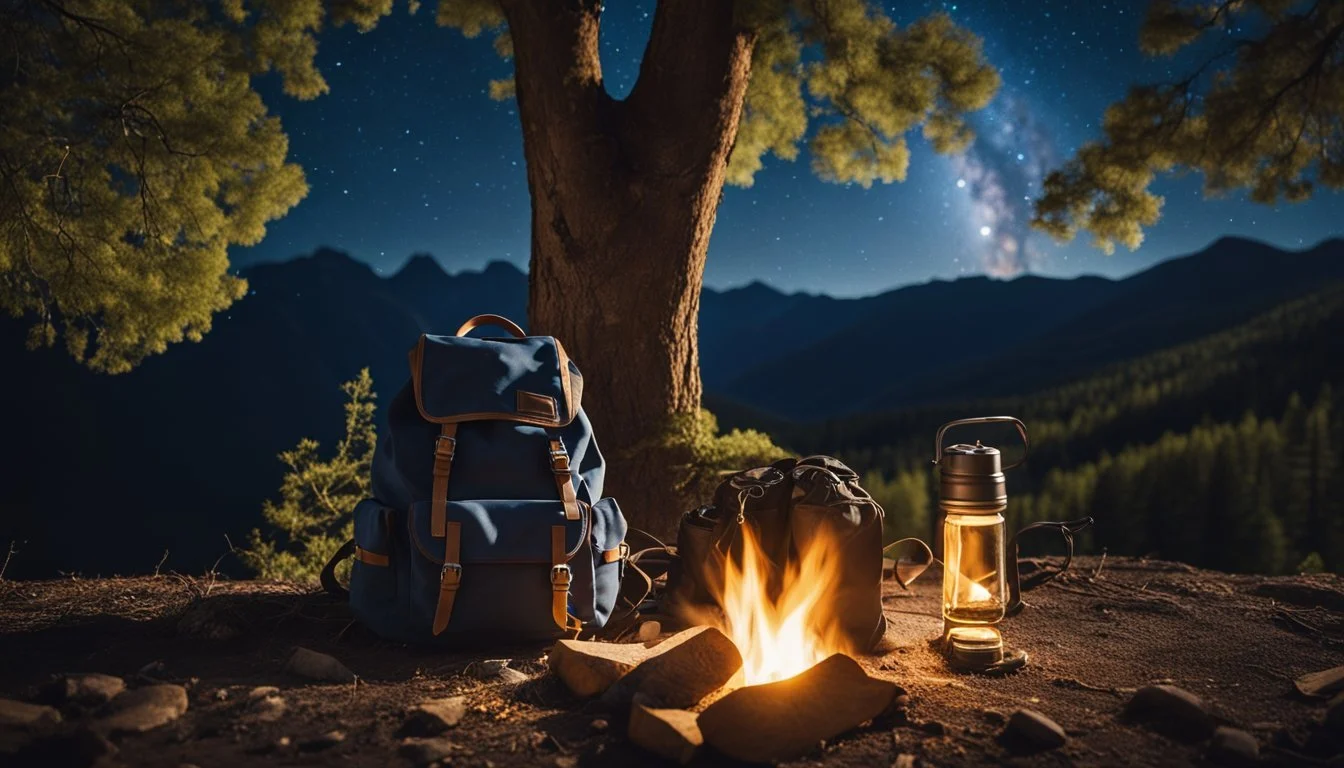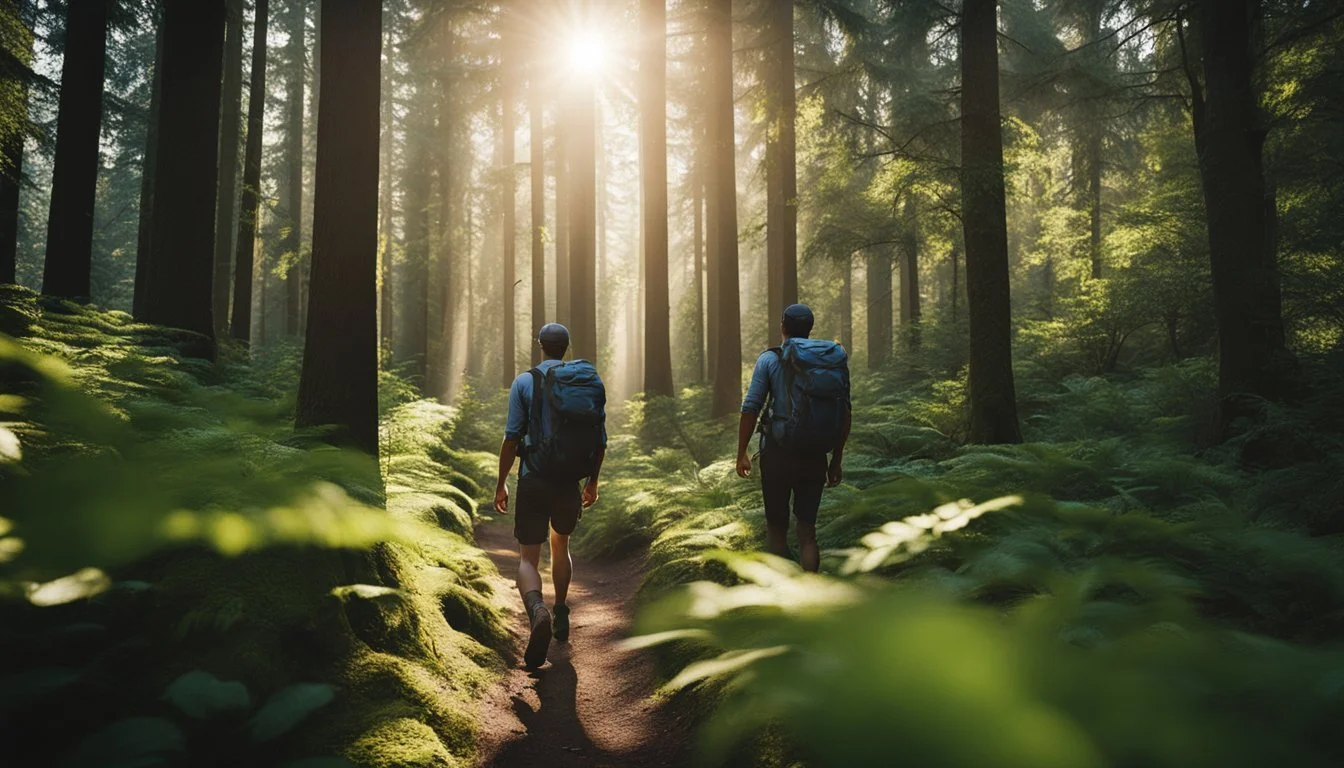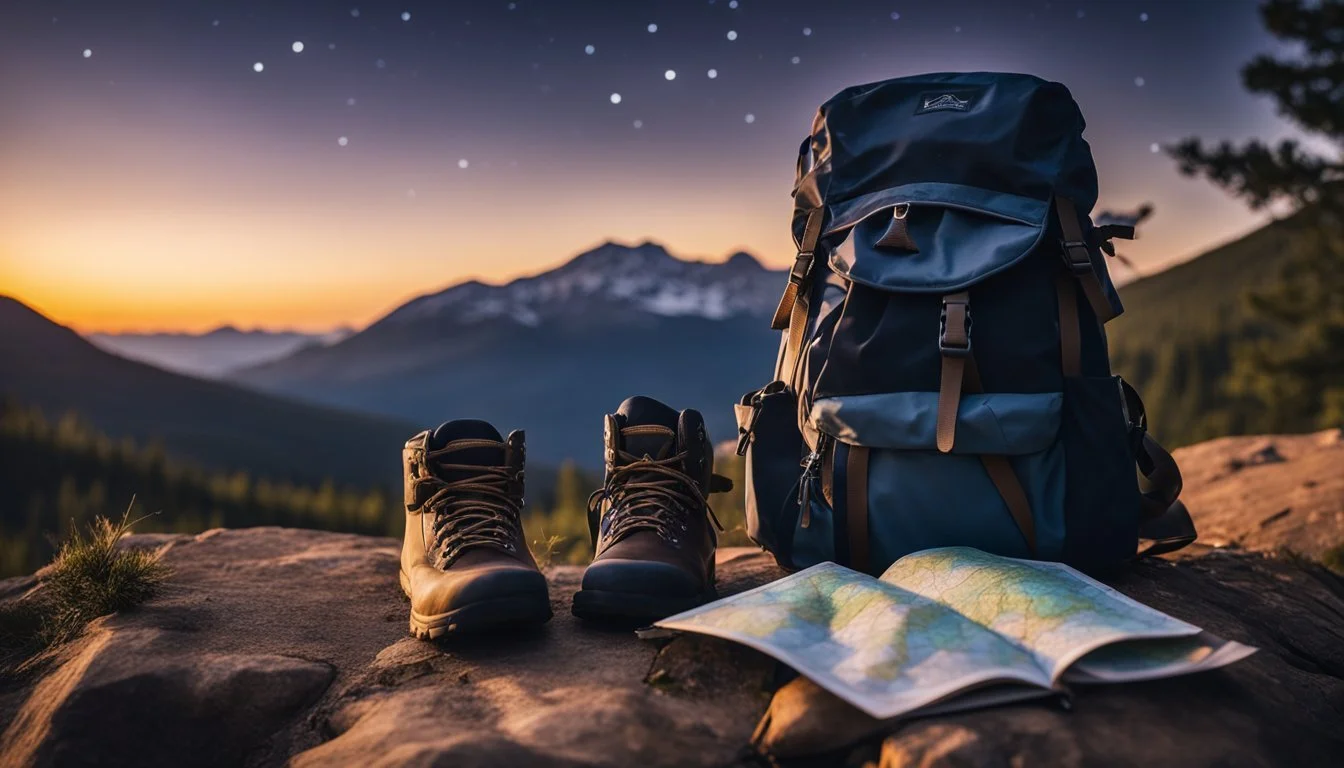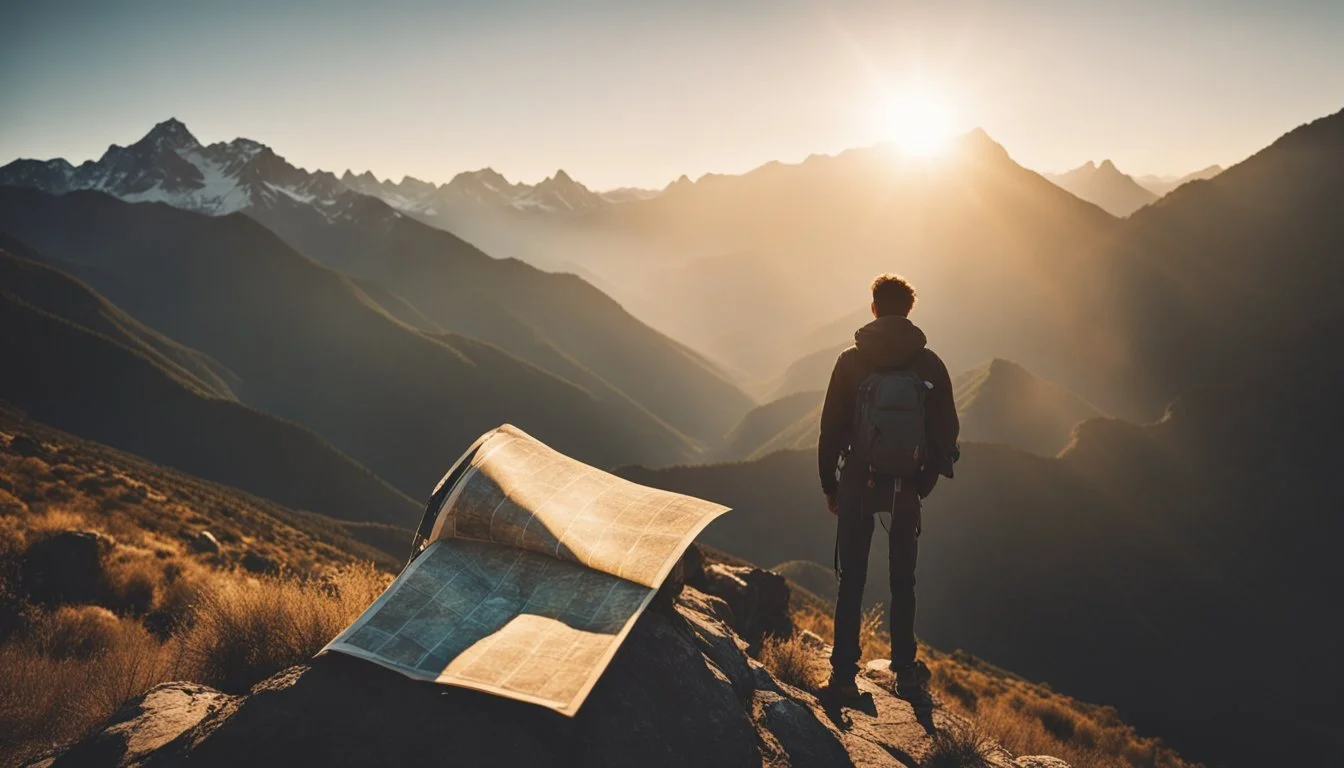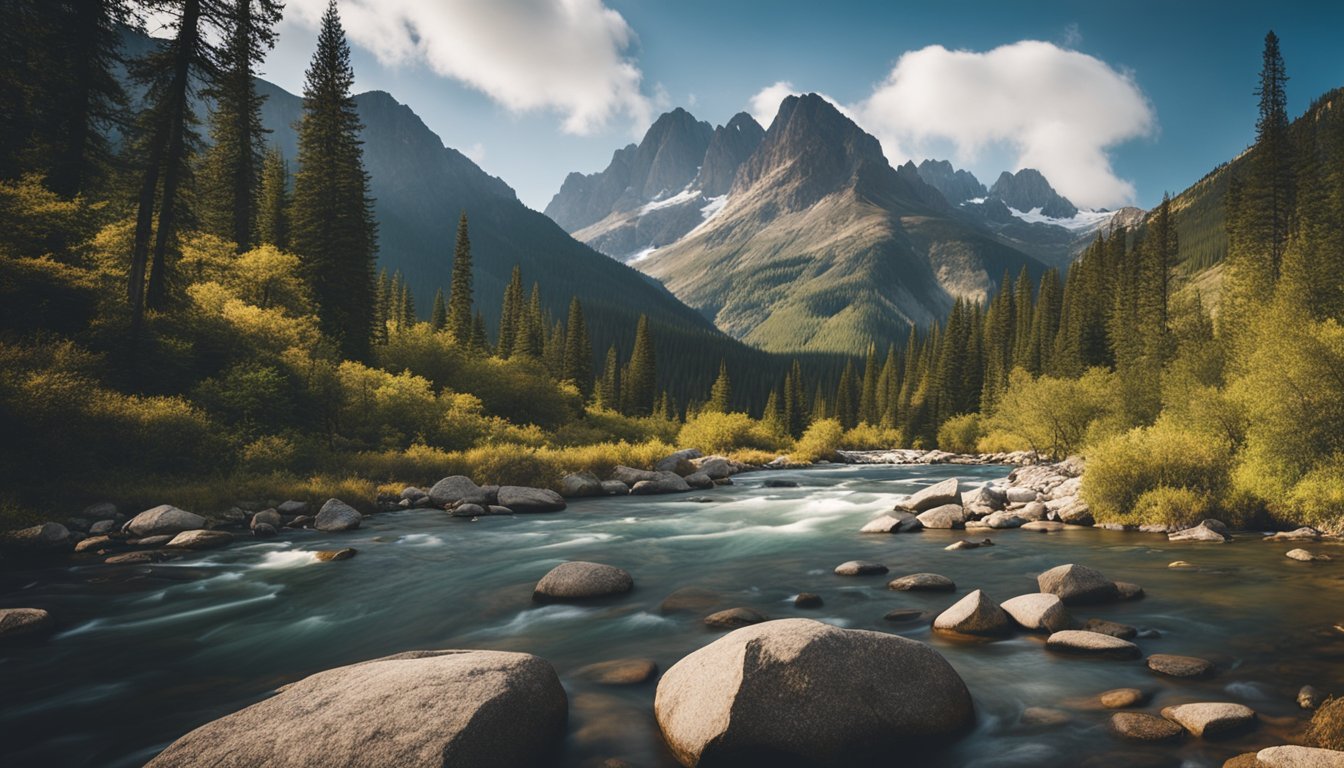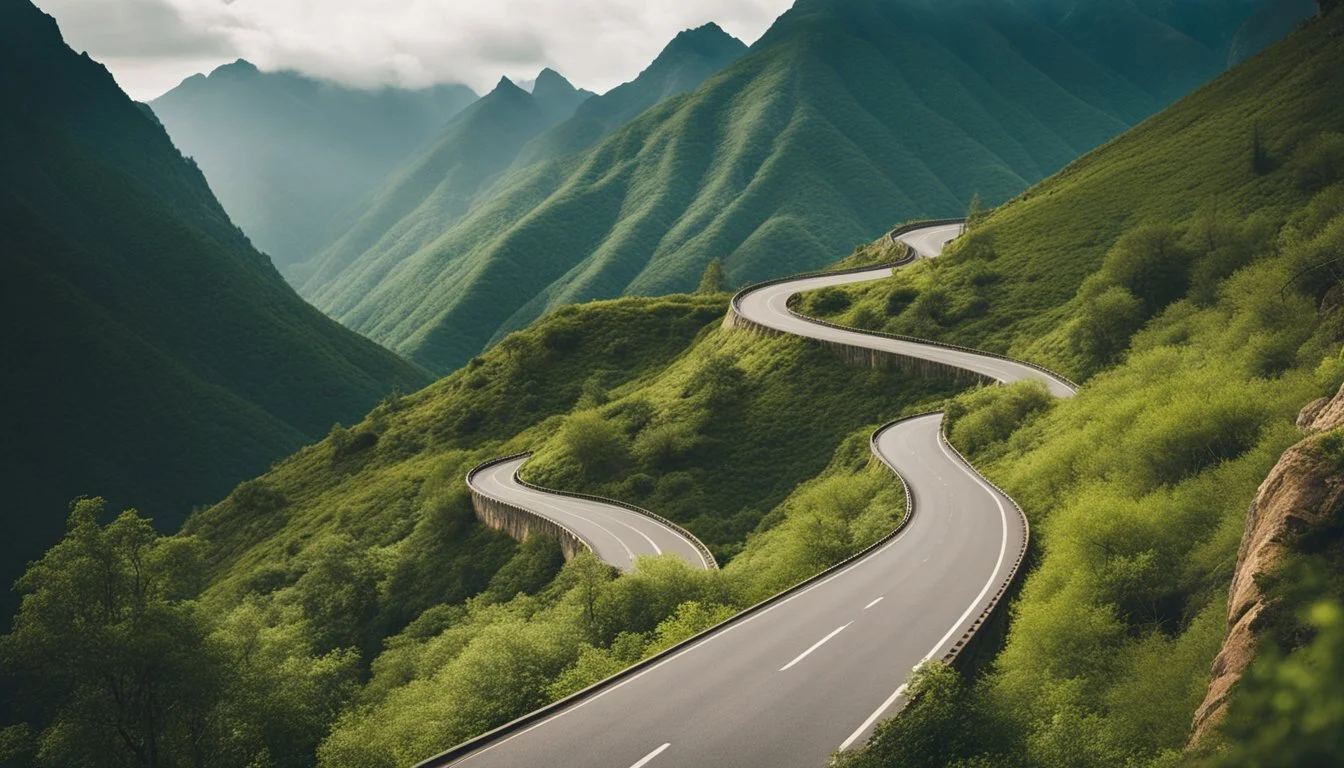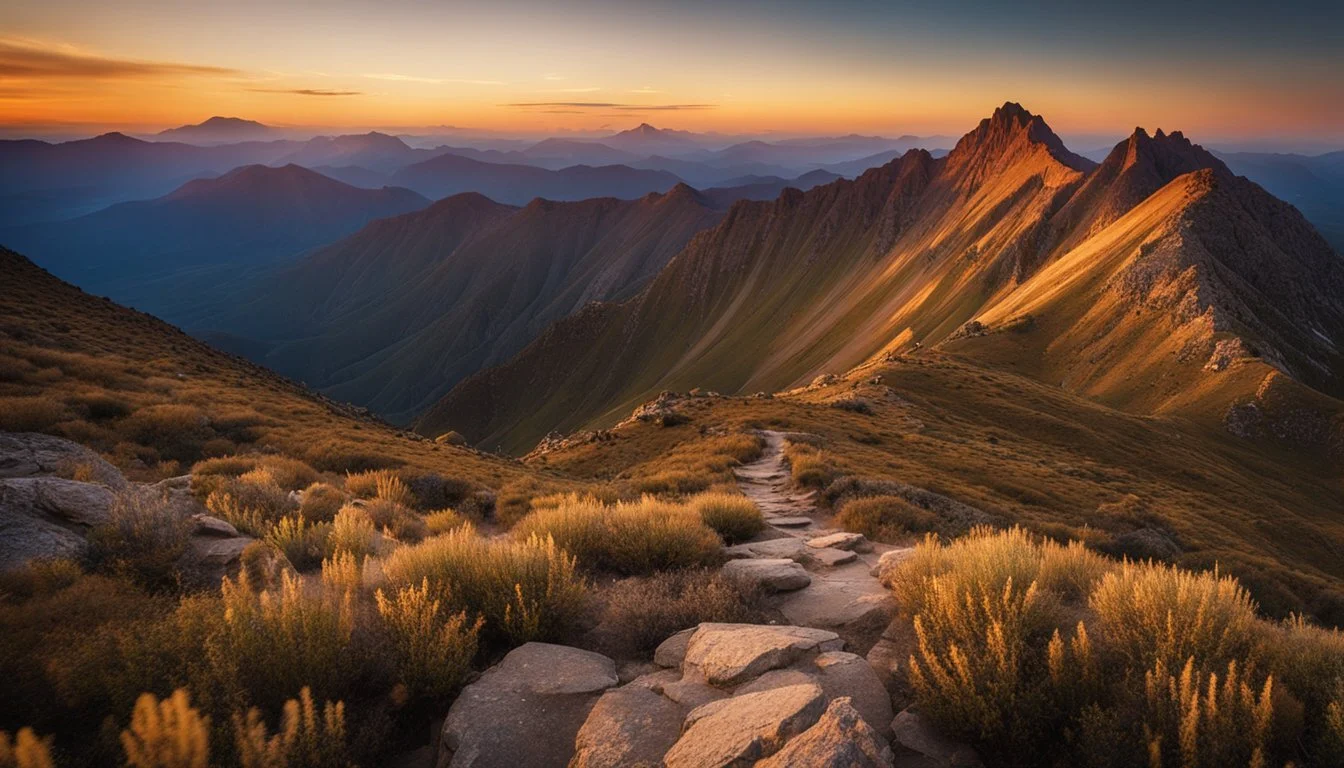16 Documentaries That Capture the Essence of Backpacking
A Must-Watch List for Travelers
Documentaries provide a compelling window into the world of backpacking, showcasing not just the physical challenges but also the profound personal growth and sense of accomplishment that come from such journeys. These films offer viewers a chance to experience the breathtaking landscapes and diverse cultures encountered along some of the world's most iconic trails.
By highlighting the most captivating and authentic backpacking experiences, these documentaries inspire adventurers and armchair travelers alike. Whether it's the grueling hike of the Pacific Crest Trail or a serene pilgrimage on the Camino de Santiago, each documentary encapsulates a unique story of endurance, exploration, and discovery, making viewers feel as if they are part of the journey themselves.
1) "180 Degrees South" (2010)
"180 Degrees South" is a documentary directed by Chris Malloy. The film follows Jeff Johnson as he traces the 1968 journey of Yvon Chouinard and Doug Tompkins from Ventura, California to Patagonia, Chile. Johnson's goal is to climb Fitz Roy, inspired by the founders of Patagonia and The North Face.
The documentary captures Johnson's experiences through stunning landscapes. He surfs, gets shipwrecked off Easter Island, and prepares for the rare ascent of Cerro Corcovado. It highlights the challenges and beauty of backpacking through remote areas.
"180 Degrees South" resonates with those who appreciate adventure and environmental conservation. It provides a glimpse into the spirit of exploration and the importance of preserving natural environments.
More about the film can be found here.
2) "A Map for Saturday" (2007)
"A Map for Saturday" explores the world of long-term solo travel and backpacking.
The documentary follows travelers across four continents, shedding light on their experiences. It features stories of backpackers helping Thai tsunami victims and shows the challenges faced by guesthouses in Nepal.
Each day feels like a Saturday for these travelers, highlighting the constant sense of adventure. The film provides insight into the motivations and lives of those who choose to backpack for extended periods.
This film is a must-see for anyone interested in the lifestyle of long-term solo travelers.
More details can be found here.
3) "The Art of Travel" (2008)
"The Art of Travel," directed by Thomas Whelan, offers a unique perspective on backpacking. It follows the adventures of Conner Layne, a young man who embarks on a solo journey to Central and South America.
Instead of sticking to a preplanned itinerary, Conner navigates challenges and unexpected situations, capturing the unpredictable nature of backpacking.
The film emphasizes spontaneous travel experiences. It showcases encounters with local cultures and diverse landscapes, highlighting the contrast between planned tourism and the freedom of backpacking.
Viewers see the protagonist adapt to new environments, often learning valuable life lessons along the way. This narrative resonates with many backpackers who cherish the uncharted paths of travel.
For more information on "The Art of Travel" (2008), visit IMDb.
4) "Craigslist Joe" (2012)
"Craigslist Joe" follows Joseph Garner as he embarks on a unique month-long journey across the United States. He relies entirely on the goodwill of people he connects with through Craigslist. This documentary showcases the potential of digital platforms to foster human connection and generosity.
Garner's experiment is simple yet bold: live for 30 days without using money or contacting people he knows. He survives solely through the help and hospitality of strangers.
As he travels, viewers see a variety of experiences, from heartwarming acts of kindness to challenging situations. Each encounter serves as a testament to the possibilities within a digital age where community support can come from unexpected places.
For more details, visit the Wikipedia page.
5) "Into the Wild" (2007)
"Into the Wild," directed by Sean Penn, chronicles the real-life journey of Christopher McCandless. This 2007 film brings to life McCandless's adventures and his pursuit of freedom in the wilderness of Alaska.
McCandless, a young man disenchanted with modern society, donates his savings to charity and sets out on a cross-country trek. His journey is both inspiring and tragic, highlighting the complexities of living off the grid.
The film showcases the breathtaking landscapes of North America. From the wheat fields of South Dakota to the snowy peaks of Alaska, viewers get a front-row seat to McCandless's exploration of the natural world.
"Into the Wild" is noted for its deep philosophical undertones. It challenges notions of materialism and societal expectations, making it a thought-provoking watch for anyone interested in self-discovery and the human spirit's resilience.
For more information, visit the IMDb page for "Into the Wild".
6) "Tracks" (2013)
"Tracks" is a biographical drama film based on the real-life journey of Robyn Davidson. Released in 2013, the film covers her 1,700-mile trek from Alice Springs to the western coast of Australia. She undertook this journey in 1977, armed with only her dog, four camels, and a willful spirit.
The film provides an intimate look at Davidson's physical and emotional challenges. She navigates the harsh and stunning landscapes of the Australian desert, showcasing the resilience required for such an ambitious adventure. Mia Wasikowska's portrayal of Davidson adds depth and empathy to the character's solitary quest.
"Tracks" also delves into themes of self-discovery and human endurance. The cinematography captures the barren, yet beautiful, Australian outback, reflecting the isolation and introspection experienced by Davidson during her long journey. The film stands out for its realistic depiction of survival and solitude in one of the world's most unforgiving terrains.
For those interested in extreme travel and personal transformation, "Tracks" offers a captivating glimpse into one woman's extraordinary adventure. It stands as an inspiring narrative of courage and determination.
More information about "Tracks" can be found on IMDb.
7) "Expedition Happiness" (2017)
"Expedition Happiness" documents the adventurous journey of a German filmmaker, Felix Starck, and his musician girlfriend, Selima Taibi. They set off on an epic road trip across North America, traveling in a school bus they converted into a mobile home. The couple is accompanied by their faithful dog, Rudi.
The film captures the couple's exploration of diverse landscapes, from the vast wilderness of Canada to the deserts of the southwestern United States. Viewers are taken along their journey, experiencing the highs and lows of life on the road.
This documentary offers a genuine look at the nomadic lifestyle, showing the challenges and rewards of traveling in a converted bus. The scenic views and personal moments shared by Felix and Selima make it a compelling watch.
To learn more about "Expedition Happiness," visit IMDb.
Expedition Happiness on Wikipedia
8) "The Way" (2010)
"The Way," released in 2010, is a heartfelt film set along the Camino de Santiago, an ancient pilgrimage route in Spain.
The story follows a father, played by Martin Sheen, who embarks on this journey to honor his recently deceased son. Along the way, he meets fellow pilgrims, each with their own personal stories and struggles.
This journey brings about transformation and healing, not just for the protagonist, but for the various characters he encounters.
The film highlights the spiritual and emotional dimensions of backpacking and the connections forged with others on the trail.
For more details, visit the IMDb page.
9) "Wild" (2014)
"Wild" is a film adaptation of Cheryl Strayed's memoir, "Wild: From Lost to Found on the Pacific Crest Trail."
The movie stars Reese Witherspoon as Cheryl, who embarks on a solo journey to hike over a thousand miles.
Her trek is both a physical challenge and a journey of personal healing.
Strayed's story on the Pacific Crest Trail highlights the transformative power of backpacking.
Through flashbacks, the audience learns about Cheryl's troubled past and personal loss.
These scenes provide context for her decision to undertake such a strenuous hike.
Reese Witherspoon's performance received critical acclaim.
The film was also praised for its honest portrayal of Strayed's emotional and physical challenges.
For those interested in films that blend adventure with personal introspection, "Wild" is a must-watch.
Learn more about "Wild" here.
10) "On the Road" (2012)
"On the Road" is a distinguished film adaptation of Jack Kerouac's seminal novel. Directed by Walter Salles, the movie showcases the journey of Sal Paradise, a young writer whose outlook on life is transformed by the adventurous and carefree Dean Moriarty.
The film explores themes of freedom, friendship, and self-discovery, set against the backdrop of post-war America. Sal's quest for meaning and adventure embodies the spirit of backpacking, resonating with anyone who seeks to explore the world and themselves.
The cinematography captures the vast landscapes of America, from bustling cities to serene countrysides, reflecting the unpredictability and excitement of travel. The characters' experiences and interactions underscore the transient nature of life on the road.
With performances by Sam Riley, Garrett Hedlund, and Kristen Stewart, the film brings to life the vibrancy and raw energy of Kerouac's writing. It celebrates the culture of the Beat Generation, highlighting their quest for authenticity and deeper connections.
For more information on "On the Road," visit IMDb.
11) "Pedal the World" (2015)
"Pedal the World" follows Felix Starck, a young German adventurer, as he cycles 18,000 kilometers across 22 countries in one year.
Seeking to add meaning to his life, Felix embarks on this journey from his home in Germany. His route takes him across Europe to Turkey.
From Turkey, Felix jets off to explore South East Asia, New Zealand, and the United States. His trip captures the essence of discovering new cultures and the physical challenge of long-distance cycling.
The documentary beautifully showcases the highs and lows of such an ambitious trip. It emphasizes both the freedom and the solitary moments encountered on the road.
For those interested in a unique approach to backpacking, "Pedal the World" offers an inspiring view of what can be achieved with determination and a bicycle.
12) "Before Sunrise" (1995)
"Before Sunrise" (1995), directed by Richard Linklater, is a romantic drama that resonates deeply with the essence of travel and serendipitous connections. The film captures the spontaneous and fleeting nature of backpacking adventures through the story of Jesse and Céline, two strangers who meet on a train and decide to spend one night together in Vienna.
As they wander through the city, their conversations cover a wide array of topics, from philosophy to life dreams. The film's dialogue-driven approach provides an intimate look at the pair's growing connection, making it a compelling watch for anyone who appreciates the beauty of unplanned encounters and deep, meaningful conversations.
The film's minimalist style and authentic performances by Ethan Hawke and Julie Delpy enhance its realism. The city of Vienna itself becomes a character, with its romantic streets and landmarks providing the perfect backdrop for Jesse and Céline's nocturnal journey.
For more information on "Before Sunrise," visit IMDb or Wikipedia.
13) "Call of the Wild" (2007)
Directed by Ron Lamothe, the 2007 documentary "Call of the Wild" presents a unique perspective on the story of Christopher McCandless, a young man who ventured into the Alaskan wilderness.
Unlike Jon Krakauer's book or Sean Penn’s film, this documentary suggests different conclusions about McCandless's death and his motivations.
With interviews and thorough research, Lamothe explores McCandless's journey in depth.
The film challenges many preconceptions and provides fresh insights into McCandless's character and the decisions that led him to undertake such a perilous adventure.
It's a documentary that appeals not only to fans of "Into the Wild" but also to anyone intrigued by the call of uncharted territories.
More details can be found on its IMDb page.
14) "The Secret Life of Walter Mitty" (2013)
"The Secret Life of Walter Mitty," directed by and starring Ben Stiller, captures the spirit of adventure and self-discovery that resonates with the backpacking experience. The film tells the story of Walter, an ordinary man working a mundane job at Life magazine.
Walter finds himself on an extraordinary journey spanning several countries, chasing a missing photograph. His travels take him to stunning locations like Iceland, Greenland, and the Himalayas, showcasing breathtaking landscapes that inspire wanderlust in viewers.
Noteworthy for its imaginative sequences, the movie blends fantasy with reality, reflecting Walter's daydreams and his real-life adventures. This mix adds depth to the narrative, illustrating how travel can transform an individual's outlook on life and themselves.
For those interested in cinematic portrayals of travel and exploration, "The Secret Life of Walter Mitty" is an engaging film that encapsulates the essence of stepping out of one's comfort zone and embracing the unknown.
More about "The Secret Life of Walter Mitty" (2013) here
15) "Seven Years in Tibet" (1997)
"Seven Years in Tibet" is a fascinating account of Austrian mountaineer Heinrich Harrer's transformative journey in Tibet. Released in 1997, this film stars Brad Pitt as Harrer and vividly portrays his experiences during a tumultuous period in Tibetan history.
Through breathtaking cinematography, viewers are transported to the high-altitude landscapes of the Himalayas, showcasing the untouched beauty of Tibet. The film also delves into cultural exchanges, highlighting Harrer's friendship with a young Dalai Lama.
The story begins with Harrer's attempt to climb Nanga Parbat and progresses to his unexpected detainment in India. He eventually escapes and makes his way to Lhasa, Tibet's capital. What follows is an exploration of Tibetan culture, spirituality, and the impact of the Chinese invasion on the region.
Jean-Jacques Annaud's direction captures the essence of both the adventurer's spirit and the political challenges faced by Tibet. The performances, particularly Pitt’s, offer a compelling look at personal transformation against a backdrop of historical upheaval.
For those intrigued by true stories set in exotic locations, "Seven Years in Tibet" provides an insightful and visually captivating experience.
16) "Backpackers" (2010)
"Backpackers," directed by Mark Waters, explores the diverse and sometimes challenging experiences of young travelers around the globe. The film follows different individuals as they navigate various countries, immersing themselves in local cultures and dealing with the complexities of international travel.
Viewers are introduced to unique travel stories, ranging from encounters with locals to navigating unexpected difficulties. Each story emphasizes the transformative power of travel, showcasing how backpacking influences personal growth.
The documentary highlights both the highs and lows of the backpacking lifestyle. It captures moments of awe-inspiring beauty, deep connections with strangers, and the inevitable struggles that come with exploring the unfamiliar. Through personal interviews and breathtaking visuals, "Backpackers" offers a comprehensive look at the realities of long-term travel.
Released in 2010, this documentary remains a compelling watch for anyone interested in the backpacking community. It provides a balanced perspective on the adventurous spirit that drives people to explore the world with just a backpack.
More about "Backpackers" on IMDb
Historical Evolution of Backpacking Documentaries
The journey from early adventure films to the refined documentaries of today paints a vivid picture of the transformation in how backpacking stories are told. This evolution highlights both the technological advancements and the deeper focus on personal narratives.
Early Influence of Adventure Films
Early 20th-century adventure films laid the groundwork for backpacking documentaries.
Titles like "Nanook of the North" (1922) showcased real-life explorations and survival. These films often romanticized the idea of adventure, inspiring many to seek the thrill of the unknown. Actual footage of expeditions brought authentic experiences to audiences, allowing them to vicariously experience new landscapes and challenges.
With primitive filming technology, directors focused on raw storytelling. This era’s key emphasis was on the bravery and endurance of explorers, which captured the public's imagination and set a precedent for future documentaries. The groundwork laid by these early films established the importance of a compelling narrative rooted in real exploration.
Growth in Popularity During the 21st Century
Entering the 21st century, backpacking documentaries began to gain mainstream popularity.
Advancements in filmmaking technology allowed for immersive experiences. High-definition cameras, drones, and portable equipment meant creators could capture remote locations with unprecedented clarity. Personal stories became more central, with documentaries like "Wild" and "Tell it on the Mountain" being notable examples. These films followed individuals on transformative journeys, emphasizing emotional and psychological experiences alongside physical challenges.
The rise of streaming platforms further boosted popularity. Platforms like Netflix and YouTube made it easier to access a wide array of backpacking documentaries, reaching a global audience. This era marked a shift from purely adventure-focused content to more introspective and diverse storytelling, reflecting varied motivations and experiences in the world of backpacking.
Visual Storytelling Techniques in Backpacking Documentaries
Backpacking documentaries rely on various visual storytelling techniques to transport viewers into the journey and landscape. Key elements include stunning cinematography and well-structured narratives centered around personal experiences.
Cinematography and Scenic Shots
High-quality cinematography is crucial in backpacking documentaries. Filmmakers often use wide-angle lenses to capture expansive landscapes, providing viewers with an immersive experience. Drone shots are also popular, offering breathtaking aerial views of mountains, forests, and rivers.
Close-up shots focus on the details of the environment, like a leaf blowing in the wind or footsteps on a rocky trail. Using time-lapse photography, filmmakers can visually represent the passage of time, such as a sun setting over a valley. This method is highly effective in demonstrating the beauty and challenges of the natural environment.
Narrative Structures and Personal Journeys
Narrative structures in backpacking documentaries often revolve around personal stories and transformative journeys. Filmmakers typically focus on the adventurers' motivations, struggles, and triumphs to create a compelling narrative. This might include interviews, voiceovers, and personal reflections shared directly with the audience.
Another common technique is to chronologically document the trip from start to finish, highlighting key moments like reaching a summit or encountering wildlife. By focusing on personal experiences, these documentaries allow viewers to connect emotionally with the subjects, making the journey feel more relatable and poignant.
Utilizing these visual storytelling techniques ensures that backpacking documentaries are not just visually appealing but also deeply engaging and memorable.

